See traditional island life in the Solomons, along with WWII relics and crystal clear dive sites
CLOSE to Australia lies an unspoilt paradise that has only just begun to emerge on the tourist map. This is where you should go now before everyone else does.
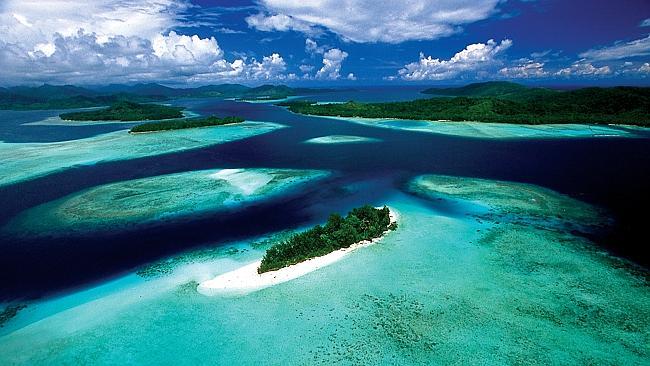
NZ & Pacific
Don't miss out on the headlines from NZ & Pacific. Followed categories will be added to My News.
IT’S like taking a step back in time. Everything from the 21st century in this little compound has entered with me. Everything else in this cluster of three thatched bamboo-framed houses has been hewed, gathered, cut or somehow won from the surrounding jungle.
In the years after the bitter fighting of World War II around the Solomon Islands, a man named Pelise Moro began evangelising a back-to-basics lifestyle for the islanders of the largest island, Guadalcanal, and today, men like Primo still follow his vision. He and his wife Paula have a little block of land just off the main road on the western outskirts of the capital, Honiara, and on it, they live like their ancestors would have lived.
Primo is at the gate with a wide, welcoming smile, clad only in a loincloth made of plant leaves that have been battered supple over a log, one of his similarly attired grandchildren clinging to his leg. We sit down cross-legged on a woven mat and Primo conducts a traditional Solomon Islands welcome – after handshakes, he says, local hosts offer a betel nut, just like cracking a brew when mates come over in Australia. The little green nut is responsible for the islanders’ red-stained teeth; biting away the hard shell, you chew the soft nut until it forms a quid, then poke a rolled leaf into some lime powder made from burnt shells or coral and dab it in the mouth. If you can stomach the bitter taste and granular texture for a few minutes, it imparts a mild high.
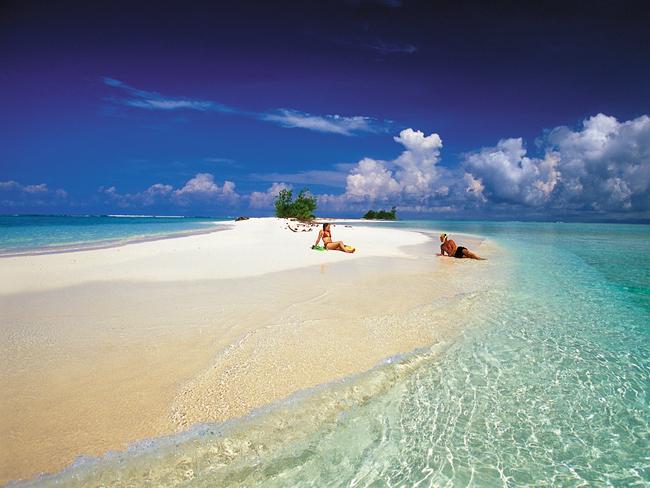
Moving inside a long, open, dirt-floored hut with two fires smouldering in pits, it’s time for Paula’s traditional cooking demonstration. Local cabbage is steamed inside hollowed sections of bamboo, and coconut milk is boiled with hot rocks from the fire’s edge. It’s ingenious and wastes nothing. After a quick look around Primo’s showpiece hut next door, its bamboo walls and roof lovingly thatched with palm fronds and filled with traditional drums and other artefacts, it’s time for goodbye.
The Solomon Islands, as a tourist destination, are in their infancy, with just a few thousand genuine holiday-makers flying into Honiara each year – a fraction of the numbers heading to Fiji or Vanuatu. As such, the best way to experience the islands is to make your first stop the Visitors Bureau and, if you’re going anywhere off the highway, travel with a local guide, who can arrange itineraries including a visit to Primo’s.
Military history buffs come here to see the battlefields of World War II, where in 1942 the US Marines fought their first actions against the Japanese over control of Henderson Field, the prim little airport every visitor flies into. But as many of these battlefields are in the rough terrain of Honiara’s hinterland or require tramping literally through someone’s backyard, it’s best to hire a local fixer to arrange a visit.
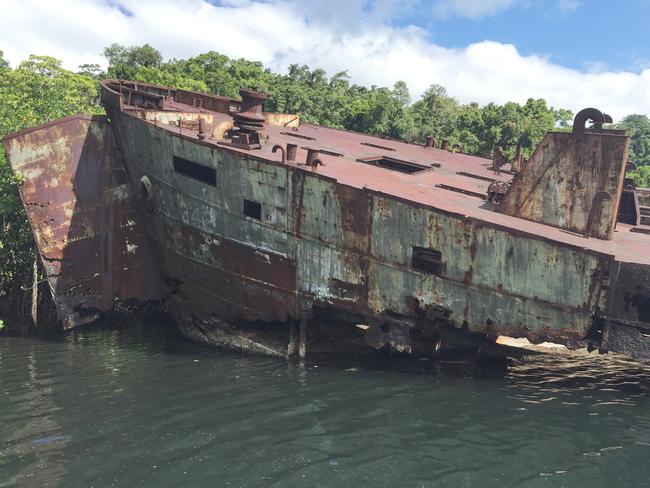
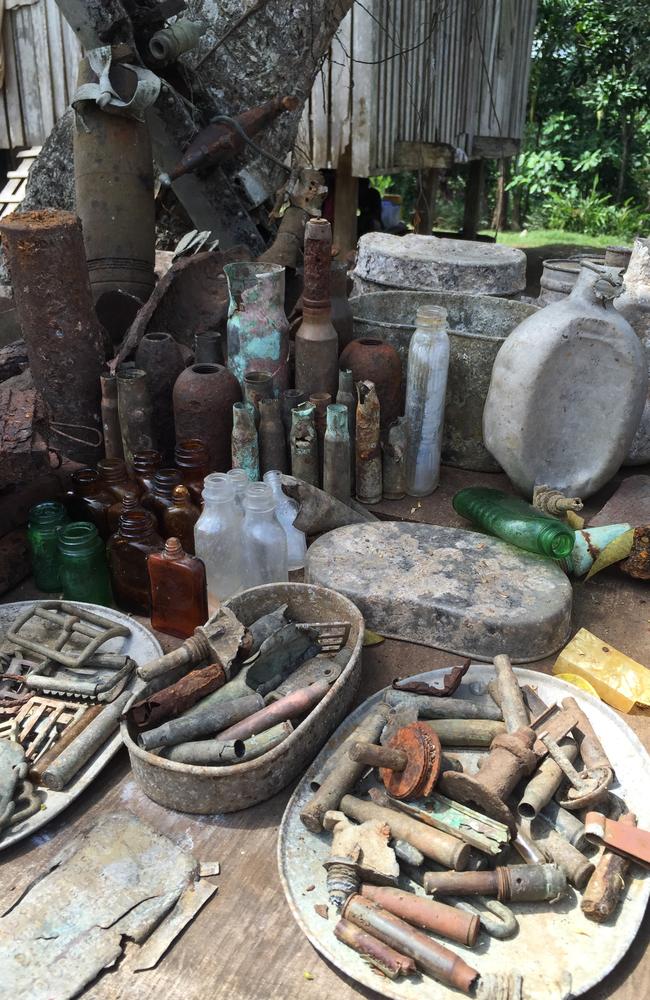
Australian historian Mat McLachlan leads an annual tour of the Guadalcanal battlefields and says this is the only tour he leads personally because he loves it so much. You don’t need to be a “war nerd” to sign up; several curious souls in our group have no affiliation with the military whatsoever. However, our band also includes two wargamers who met through playing online, several Australian Vietnam veterans, a US Navy veteran, and a couple of men whose fathers served in World War II during the Guadalcanal campaign. Australian-born Terry’s American dad was a member of the 5th Marines, and when we make the trek out to Edson’s Ridge overlooking the airport and stand by old foxholes where the Americans dug in, Terry sits down in perhaps the very one his dad could have taken cover in.
Another battle site known as the Gifu, on the slopes of Mount Austen above town, was where hundreds of Japanese held out for weeks against the Americans, but were finally slaughtered. In the long grass there are still tussocks of barbed wire, and scattered everywhere still are fragments of grenades, bullet casings, buttons and other rusted relics. McLachlan carries old photos from the war, and looking at one here is like looking through a portal in time.
The war is a huge reason to visit, but there are many more. The Heritage Park hotel on the city’s waterfront is a great base. For the adventurous, the Visitors Bureau can arrange snorkelling trips to Bonegi Beach outside town, where a sunken Japanese troopship lies.
Or for diving in some of the most pristine waters on the planet, Neil Yates of Tulagi Dive can arrange a one-hour boat trip across Iron Bottom Sound to the small island where John F. Kennedy was stationed during the war. The boat ride is also part of McLachlan’s tour, for a look around JFK’s old stamping ground. As our boats glide in to Blue Beach, one of our tourmates can’t wait and dives straight in – and after a hike around the island and a meal with a couple of local SolBrews at the rustic Vanita Motel, we’re all splashing around off the dock, exactly where more than seven decades ago a US President-in-waiting might have cooled off.
As a military posting, it sure beats a muddy European trench, a freezing forest or a jungle foxhole.
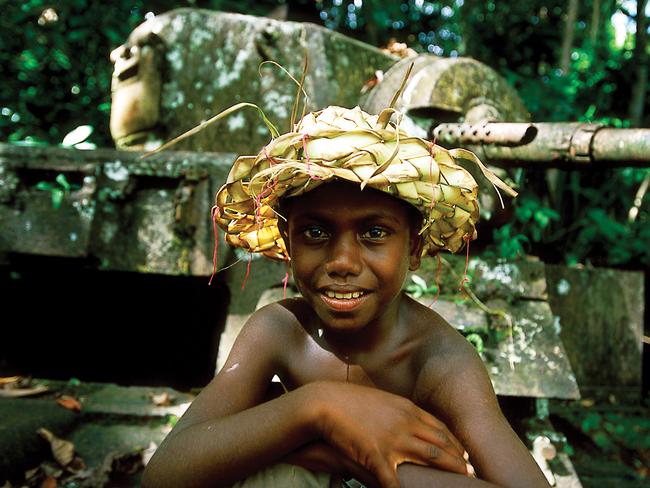
GO2: HONIARA
GETTING THERE
Solomon Airlines flies from Brisbane to Honiara return four times a week and from Sydney once a week. See flysolomons.com
STAYING THERE
The four-star Heritage Park hotel has a pool, a cosy restaurant and bar with an outdoor terrace, and laid-back, friendly staff. See heritageparkhotel.com.sb
SEE AND DO THERE
Mat McLachlan Battlefield Tours has a five-day 2016 Guadalcanal Battlefields tour designed to coincide with several memorial services, including that of the sinking of the HMAS Canberra. See battlefields.com.au
Dive Tulagi has various scuba diving experiences to suit all skill levels and budgets. See tulagidive.com
MORE
Solomon Islands Visitors Bureau can assist with sightseeing and activities. See visitsolomons.com.sb
Originally published as See traditional island life in the Solomons, along with WWII relics and crystal clear dive sites

